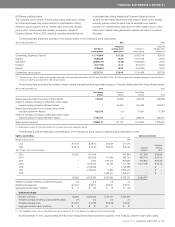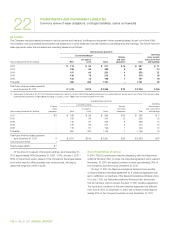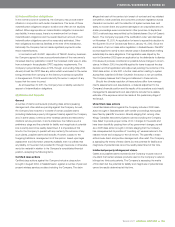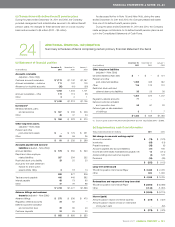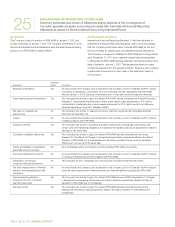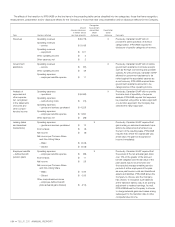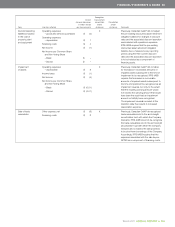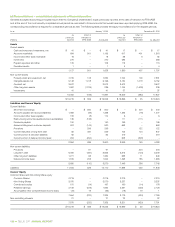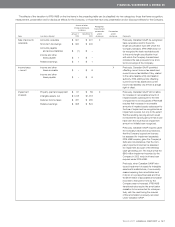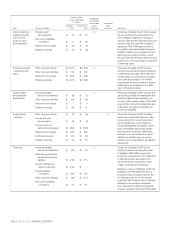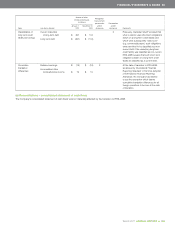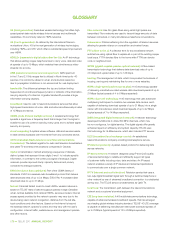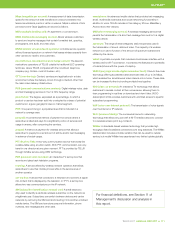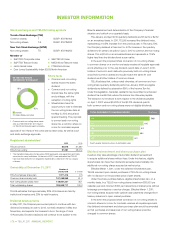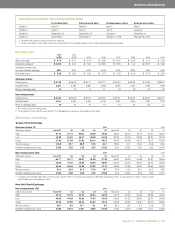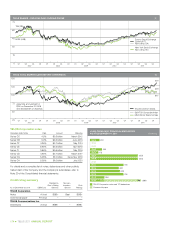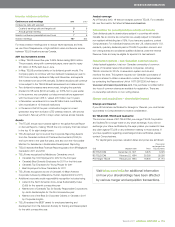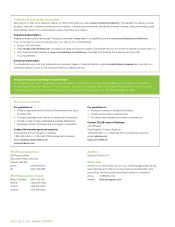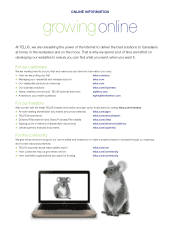Telus 2011 Annual Report Download - page 171
Download and view the complete annual report
Please find page 171 of the 2011 Telus annual report below. You can navigate through the pages in the report by either clicking on the pages listed below, or by using the keyword search tool below to find specific information within the annual report.
TELUS 2011 ANNUAL REPORT . 167
FINANCIAL STATEMENTS & NOTES: 25
The effects of the transition to IFRS-IASB on the line items in the preceding table can be classified into two categories: those that have recognition,
measurement, presentation and/or disclosure effects for the Company, or those that have only presentation and/or disclosure effects for the Company.
Topic
Amount of effect Recognition,
(increase (decrease), measurement,
in millions) presentation Presentation
January 1, December 31, and/or and/or
Line items affected 2010 2010 disclosure disclosure
Comments
Sale of accounts
receivable
Accounts receivable $ 501 $ 401 X
Short-term borrowings $ 500 $ 400
Accounts payable
and accrued liabilities $ß (1) $ –
Income and other
taxes payable $ 1 $ –
Retained earnings $ 1 $ 1
Previously, Canadian GAAP de-recognized
trade receivables sold to the arm’s-
length securitization trust with which the
Company transacts. IFRS-IASB does not
de-recognize the trade receivables sold
to the arm’s-length securitization trust
with which the Company transacts and
considers the sale proceeds to be short-
term borrowings of the Company.
Income taxes
– current
Income and other X
taxes receivable $ – $ 6
Income and other
taxes payable $ – $ 6
Previously, Canadian GAAP permitted
offsetting current income tax assets and
current income tax liabilities if they related
to the same taxable entity and taxation
authority. IFRS-IASB permits offsetting
current income tax assets and current
income tax liabilities only if there is a legal
right of offset.
Impairment
of assets
Property, plant and equipment
$ 91 $ 86 X
Intangible assets, net $ß1,018 $ß1,018
Deferred income taxes $ 281 $ 280
Retained earnings $ 828 $ 824
Previously, Canadian GAAP did not allow
for increases in recoverable amounts of
impaired assets subsequent to the time
of impairment to be recognized. IFRS-IASB
requires that increases in recoverable
amounts of impaired assets subsequent to
the time of impairment be recognized as an
impairment reversal, but only to the extent
that the resulting carrying amount would
not exceed the carrying amount that would
have been the result had an impair ment
amount not initially been recognized.
Previously, Canadian GAAP required, given
the Company’s facts and circumstances,
that the Company’s spectrum licences
be assessed for impairment separately.
IFRS-IASB requires, given the Company’s
facts and circumstances, that the Com-
pany’s spectrum licences be assessed
for impairment as a part of the Wireless
cash-generating unit. The result is that the
$910 million impairment recorded by the
Company in 2002 would not have been
required under IFRS-IASB.
Previously, when Canadian GAAP intro-
duced impairment of assets for intangible
assets with indefinite lives, it concurrently
ceased requiring their amortization and
it did so on a prospective basis and thus
the $108 million of associated amortization
recorded to that point in time by the
Company was not reversed. IFRS-IASB
transitional rules require the amortization
cessation to be accounted for retrospec-
tively with the result being the reversal
of the amortization previously recorded
under Canadian GAAP.


